The United States was plunged into turmoil this week as demonstrations denouncing the killing of a black citizen by police officers entered a second week, prompting debate over racism and US President Donald Trump’s handling of the crisis.
Protests have erupted throughout the country following the killing of 46-year-old George Floyd in Minneapolis on May 25. Activists, emboldened by shocking images of the killing circulating online of the incident, have rallied tirelessly, calling attention to the United States’ long legacy of police brutality and discrimination against black citizens.
Trump, while condemning Floyd’s death, responded in a typically combative fashion, vowing to deliver “law and order” and warning protesters that violence on the nation’s streets would not be tolerated.
The killing was recorded by a passerby and subsequently went viral on social media. Derek Chauvin, the police officer who kneeled on Floyd’s neck for almost nine minutes, has been arrested and charged with second-degree murder. The other three officers present have been charged with aiding and abetting second-degree murder.
Former US president Barack Obama condemned the killing, but said the events of the past few weeks could awaken people to "underlying trends."
“They offer an opportunity for us to all work together to tackle, to take them on, to change America and make it live up to its highest ideals," he said.
Grassroots
The protests on the ground in cities throughout the US are largely the work of grassroots organisations, activists and members of local communities. They have been, by-and-large, peaceful, though violent escalations and looting have been seen in some cities.
Protesters, observers, and police often disagree on the original cause of these incidents, with some blaming looters while others call attention to the undue use of force by police against peaceful protestors.
During the third night of protests in Minneapolis this week, demonstrators took over and eventually set fire to a police station after Mayor Jacob Frey ordered staff to abandon the building. Arson was also seen in Atlanta, New York, and Washington DC.
President Trump has been outspoken in condemning the demonstrations. Both in a formal speech and in numerous posts on Twitter he threatened to use military intervention to quell the protests, remarking that “when the looting starts, the shooting starts” – using words originally attributed to Walter Headley, a late Miami police chief who was known for violent dispersals of black protests in the 1960s. He has not clarified if the quote was intentional or not.
The Republican leader’s response to local protests has also been oppositional. In what amounted to a bizarre attempt to symbolically denounce rioting, police tear-gassed peaceful protesters near the White House and forcibly dispersed them in order to clear the way for what later emerged to be a photo-op. Trump then walked out the front door of the presidential residence to the nearby, boarded-up St. John’s Church, Bible in-hand, and posed.

An ongoing fight
For many black Americans, activists, and citizens throughout the US, Floyd’s killing represents another link in a long chain of police violence against black people in the country.
In St Louis, Missouri – home to the Ferguson protests over the shooting of unarmed black teenager Michael Brown by a police officer in 2014 – the current demonstrations are a familiar and traumatic occurrence.
Rasheen Aldridge, a longtime activist and current state representative for the downtown St Louis district, explained to the Times that “people, once again, are taking to the streets [after] the death of another unarmed person of colour being killed by police officers.”
The 26-year-old, who was on the ground protesting in Ferguson in 2014, said that seeing images of George Floyd’s death had left him “disgusted.”
“It brought back a lot of trauma of how Mike Brown died, just a lack of respect for the life of a black person from a police officer, someone who is supposed to respect and serve you,” said Aldridge.
Tensions soared again on Friday as new images of other acts of police brutality emerged, including an assault on a 75-year-old protester in New York. In Indianapolis, an investigation was opened after footage revealed at least four officers had hit a woman with batons and fired pepper balls at her at close range.
‘For generations’
Activism across the United States has taken on many different forms. People from every walk of life have joined the protests in person, with others turning to social media to encourage education and offer support. Many are gathering supplies for protesters, donating to bail-out funds, or offering pro-bono legal assistance.
Sonia Torres Rodríguez, a 23-year-old alumni of Rice University in Houston and the organiser for Rice for Black Life – a grassroots fundraiser which raised over US$90,000 to support local activist organisations – said that since she has been unable to attend the protests in person, she had to find other ways to support the movement.
“I have been coordinating rides and trying to get a list of resources for protestors who do go, including people who can fund their gear, people who can get them food and water, as well as safe houses,” she told the Times.
Rice for Black Life is just one of many grassroots organisations that are supporting the protests and the Black Lives Matter movement. Student groups have mobilised in every part of the US, demanding greater focus be placed on injustices.
Activists agree that the energy behind these protests, in particular, has been incredible. Still, they note that this issue is not new, citing 2014 rallies after the deaths of Michael Brown and Eric Garner, another black citizen who was killed by a white police officer using a banned chokehold.
“This has been going on for generations,” Aldridge said. “It brings a lot of pain and hurt to people in different ways, whether they’ve been going through it for five years, ten years, or their whole life."
From Minneapolis, protester Runo Egi described the rioting and protests as a representation of “years of pent up anger and outrage over police brutality.”
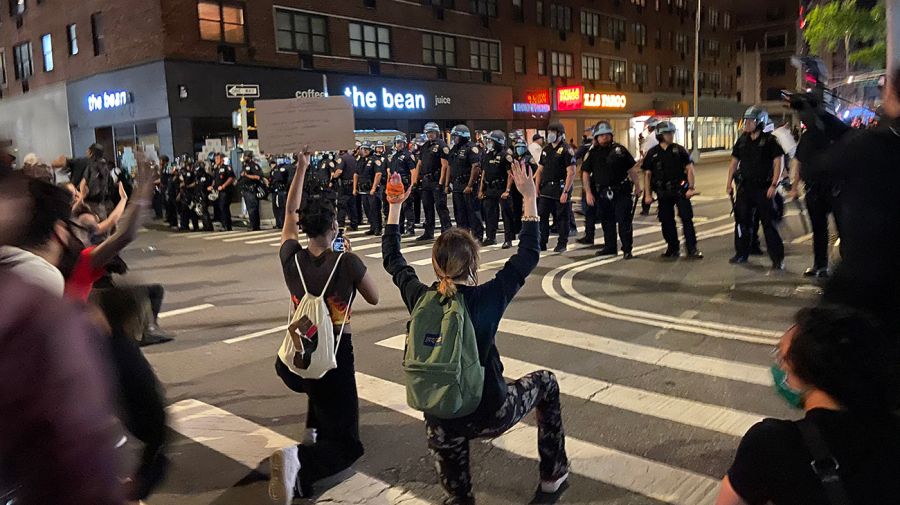
Government responses
Government responses to the protests have varied from city to city. Common tactics include imposing curfews, calling in the national guard, and mass arrests. Minneapolis implemented a curfew in Hennepin County on May 29, a move followed by Los Angeles and New York City, among others.
The curfews and the policing of them have drawn criticism from activists.
“In Minneapolis, one day they started shutting down roads at 5pm for an 8pm curfew,” complained Egi. “In my opinion, the curfew was put into place so that they can arrest protesters, because even if you are peacefully protesting after 8pm, they’re going to arrest you.”
In other cities, curfews were imposed closer to their start times. In Chicago, for example, Mayor Lori Lightfoot implemented a 9pm curfew at 8.25pm, according to local news sources.
In Los Angeles, “the curfew has been extended indefinitely, until the protests end,” Roza Calderon, a vocal human rights activist and former congressional candidate in California, told the Times.
“Essentially, they are cutting us off at the knees by saying you don’t have your First Amendment right, your right to peacefully protest. They are taking that away,” she added.
Aldridge called the curfews and the activating of the National Guard “premature.”
“I would say the state response has been a little out of touch on how we move forward together,” he explained, adding the approach was reactive rather than proactive.
‘Protest to politics’
The hope for many protestors is that the demonstrations will deliver justice for George Floyd and his family, for the others that have been killed, and ultimately the arrival of a major systemic change in the United States.
Change, however, can take time. Aldridge said that protesters were on the streets in St Louis for more than a year after Michael Brown’s killing. That anger and pain, he said, had eventually delivered meaningful change, moving people into positions of power. “We didn’t just go from protest to protest; we went from protest to politics,” he said.
For the young representative, the hope is that this change will come in the form of criminal justice reform.
Across the country, that demand has taken shape, in part, with a call for a cut in funding to the police, particularly in cities where police departments make up a significant portion of government spending.
“Mayor Eric Garcetti has always given an enormous budget to the LAPD [Los Angeles Police Department], which worldwide is known as one of the most corrupt precincts,” argued Calderon.
Egi agrees that there must be meaningful legislative change. “Why do schools in Minneapolis not have the resources they need when so much money is going to the police?,” she said.
Cori Bush, a registered nurse in St Louis and a US congressional candidate for Missouri’s 1st district, told the Times that she believes the nation must “prioritise ending racial profiling and stopping the militarisation of the police.”
She adds: “We need to promote diversity in hiring.”
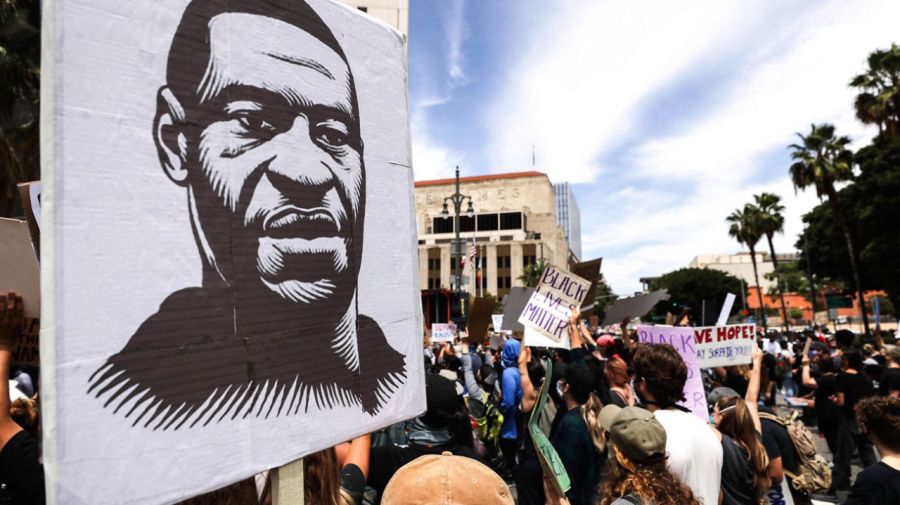
Media narratives
Many activists have been critical of how mainstream media has covered the protests, arguing that news outlets are shifting attention from George Floyd and police brutality to the destruction of property.
“[The media] is using the looting and rioting to distract from the problem we have at hand which is police brutality,” says Egi. “They’re focusing on looting and rioting and not why people are doing it.”
Calderon agrees. “The media has always taken a role where it protects the interest of the wealthy and the powerful in the US,” she said.
Looting has been a hot topic historically during protests against police brutality. Rioting over the past 10 days has already cost an estimated US$25 million worth of property damage in Minnesota alone, according to reports, while nationwide experts say the cost could rack up to US$100 million. While many people view property damage as violence, some activists disagree.
Courtney Curd, an activist in New York City, told the Times that she is in support of the looting of some stores, such as Chanel and Louis Vuitton, who she feels attempt to “profit off black culture,” but opposes the destruction of “mom and pop” shops.
Curd also agrees that popular media has been inclined to push certain narratives about the protests, specifically when it comes to police involvement.
“White politicians are exemplifying police who are taking a knee, but if you’re on the ground you know that the moment the media leaves –– this happened in Portland, New York, Chicago, Philadelphia –– they immediately tear gas you.”
Bush shares similar concerns, but says that overall the media has been covering the protests well.
“I would say the media has covered the protests in St Louis pretty well. They’ve been making sure that they’re at the protests, and they’ve been talking to people in the crowds,” she said.
She explains, however, that there are narratives that bother her. “One is the peaceful protesters narrative. Protests are violent or non-violent; they’re never peaceful. Protests disturb peace. We’re not trying to be peaceful because we don’t live peacefully now.”
Protesting amid the pandemic
The protests, it should not be forgotten, have arrived at a peculiar time. Experts and officials have expressed fears that the protests could lead to spikes in Covid-19 infections, saying that large public gatherings are still a risk even if protesters are wearing masks. Experts also acknowledge the risk of virus transmission from people who do not display symptoms.
Torres Rodríguez said the decision to rally was an acknowledgment that “if coronavirus doesn’t kill you first, police brutality will,” and said many protesters were wearing masks.
“It’s an understanding that even if people stay inside, even if they are just shopping during the coronavirus pandemic, they could get pulled aside for an alleged fraudulent 20-dollar cheque,” a reference to Floyd’s killing, which occurred when police responded to a call reporting a counterfeit bill.
The Texas resident also added that coronavirus protocols were not being respected in towns and cities across the US. “Everywhere I go, no one is social distancing, no one is wearing masks. People are visiting each other, they are taking trips, they are going to the beach,” she said. “Why would you stay inside when you aren’t being protected from either coronavirus or police brutality?”
Bush says that protesters “want people to stay safe,” and said while most protesters were wearing face masks, local organisations were also supplying them to those who did not have them.
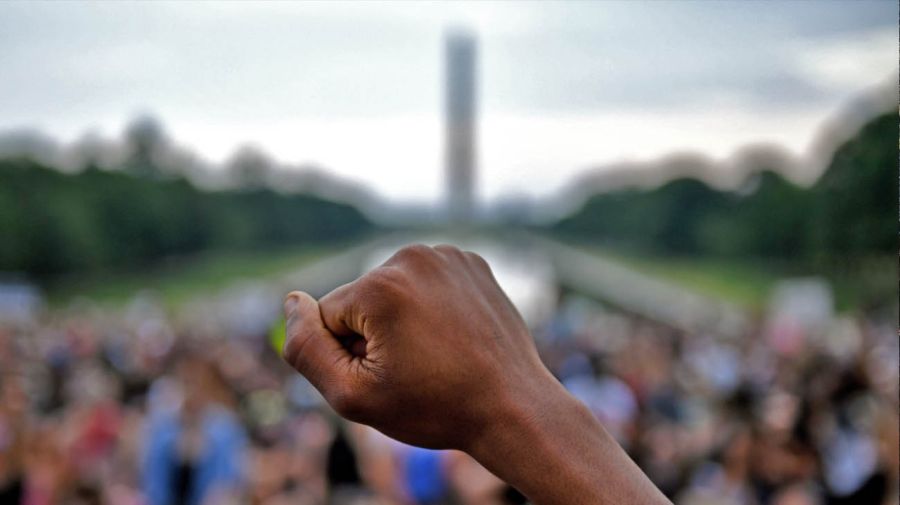
Gone global
Protests have taken place not just throughout the United States, but all over the world. Residents in cities in Australia, Sweden, Brazil, Germany, Spain and more have all turned out to oppose police brutality and racism in their own countries and in solidarity with the US.
"There has been so much love just to see the solidarity from different places like Paris and the UK. People are stepping up and saying enough is enough,” Aldridge said.
“As a Puerto Rican who moved to the US, international solidarity is pretty important to me,” Torres Rodríguez told the Times. “I think it’s really powerful that people are realising that we are kind of fighting the same violence.”
Aldridge echoed those sentiments. “This isn’t just a United States issue. You see over policing and brutality even worse in other places, shutting down people’s voices,” he said.
“We support them in their movement and we appreciate them supporting us in our movement,” he says, “because ultimately this is everybody’s movement for justice, for peace, and for humanity, no matter what you look like, no matter what zip code you live in, no matter what education you have.”










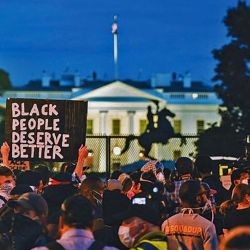

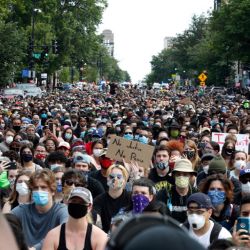
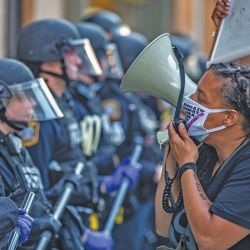
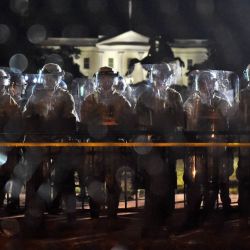


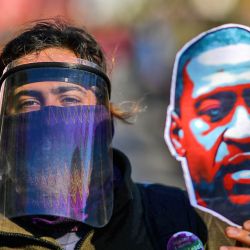














Comments